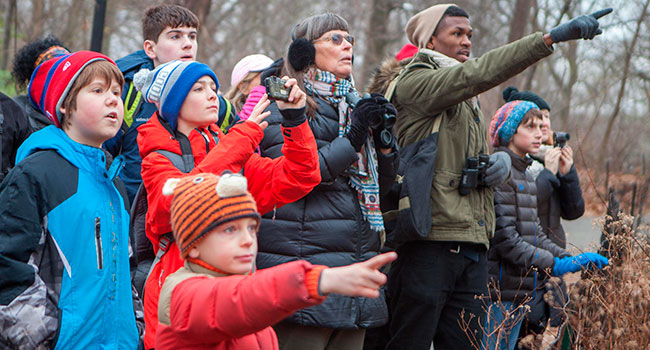 In the latter part of the 19th century, sportsmen would gather to take part in annual winter bird hunts called “side hunts.” Everything they saw was shot, regardless of whether it was edible or rare.
In the latter part of the 19th century, sportsmen would gather to take part in annual winter bird hunts called “side hunts.” Everything they saw was shot, regardless of whether it was edible or rare.
This was a popular pastime and undoubtedly contributed to significant avian declines during the period.
Frank Chapman, author of Handbook of the Birds of Eastern North America in the 1890s and founder of Bird-Lore magazine (later to become Audubon magazine), attempted to halt this consumptive and damaging practice.
He proposed people actually count birds rather than shoot them – how outrageous!
At the time, conservation wasn’t on anybody’s mind and even ornithologists shot thousands of birds annually to collect their skins for museum specimens. So Chapman’s concept was unique in many ways.
The beginnings were simple enough: in 1900, under the encouragement of Chapman, 27 observers took part in the first Christmas bird censuses – as they were called at the time – in Canada and the United States. From these humble beginnings, almost 100,000 people now count birds in thousands of places all over the Western Hemisphere, albeit the vast majority are still in North America.
The concept is simple: an area of interest is identified by a local birding group and a count circle is established. A count circle is an area 24 km in diameter that’s surveyed annually by interested birders during a two-week period around the Christmas season. Every bird seen or heard is counted.
The records are compiled annually and submitted to the National Audubon Society in the United States or to Birds Canada. The dates of the counts are fixed so consistency is achieved and data comparisons can be made. There’s no logic in doing a bird count in June and expecting to compare to the results of one done in December.
People can now choose to feeder watch rather than going out into the field. This allows more people to participate and assists persons with mobility issues. It’s also a great addition to the data collected as more birds are counted that otherwise might have been missed as they hide in someone’s back yard.
So how good is the data?
There are a few problems: observer skill, ability to estimate when large numbers of birds are seen in a flock, duplicate counting and missed areas of coverage must all be considered when analyzing the results.
That said, millions of bits of data are collected annually and as the longevity of the individual count grows, patterns can be seen and understood. So despite the difficulties inherent in citizen science censuses such as this, the data is hugely valuable.
So who uses this data and how?
Many scientists, municipalities, governments and consultants rely on this to provide long-term data on the status of individual species and populations of birds in given areas.
The beauty of the Christmas bird count is that it deals with birds that are wintering and as such rely on the local habitats in all four seasons for the most part, as opposed to migrants that only show up for half the year. This persistence and fidelity to a locale means a great deal when trying to analyze the health of an ecosystem.
So how many bird are counted, by whom and where?
In the first count in 1900, 18,500 birds were counted by 27 people. In 2018-19 in Canada alone, 461 Christmas bird counts were run, involving 11,209 field counters and 3,745 feeder watchers, finding almost three million birds of 285 species!
Christmas bird counts are run in many regions across North America. If you’re interested in finding more about it or joining a count this December, visit Birds Canada.
Geoff Carpentier is a published author, expedition guide and environmental consultant. Visit Geoff online at www.avocetnatureservices.com, on LinkedIn and on Facebook.
The views, opinions and positions expressed by columnists and contributors are the author’s alone. They do not inherently or expressly reflect the views, opinions and/or positions of our publication.


